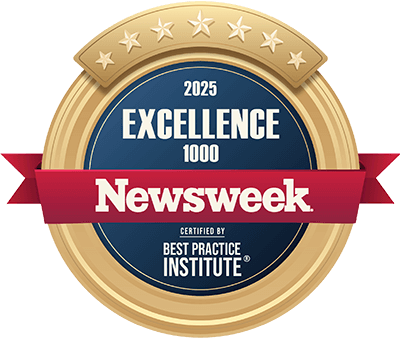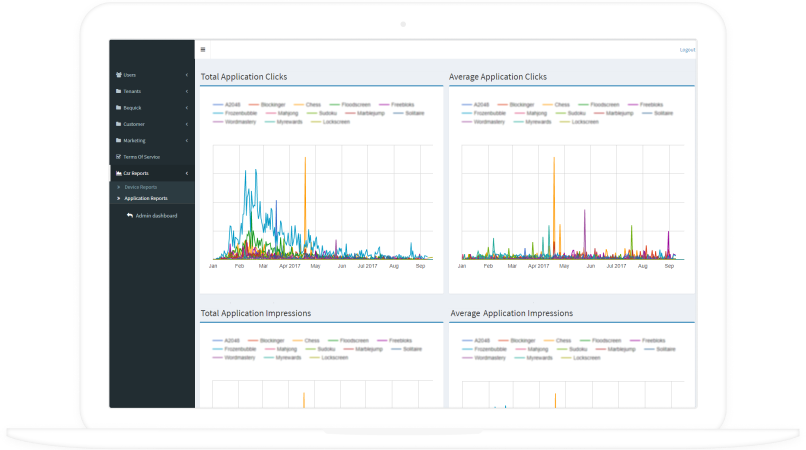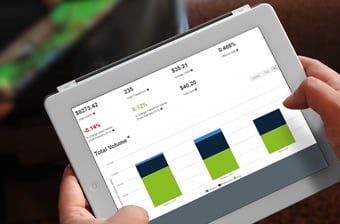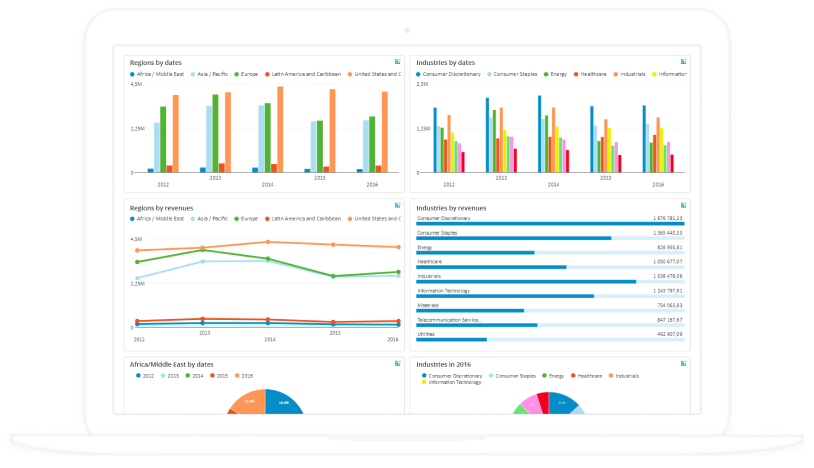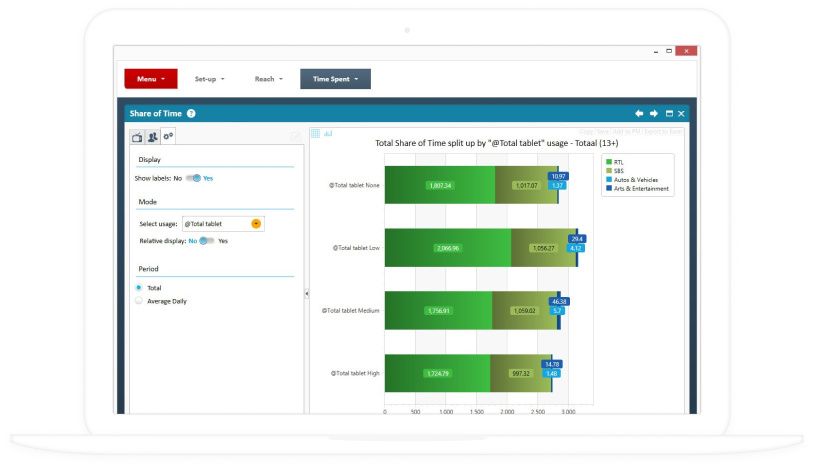How to Set Up Data Consolidation
Plan, Skills, Software, Sourcing Models and Costs
Since 1989, ScienceSoft has been providing data analytics services to help companies design and implement cost-effective data consolidation solutions.
Data Consolidation: Summary
Data consolidation is a way to combine multi-source data into a single location optimized for analytics, reporting, and regulatory compliance. Providing data consolidation services, ScienceSoft is dedicated to achieving project success through precise scoping, proactive risk mitigation, flexible change request management, and other established project management practices. Since 2005, we have delivered robust business intelligence solutions where data consolidation is an important step to data-driven, valuable insights.
How to do data consolidation in 7 steps
- Identify objectives for data consolidation (e.g., analytics and reporting, regulatory compliance).
- Review the data sources to be integrated.
- Choose an optimal data integration technique and tech stack, depending on data specifics and consolidation objectives.
- Plan the project and create a risk mitigation strategy.
- Design ETL/ELT pipelines, architecture layers, and data quality and security management frameworks.
- Code and test the data consolidation solution.
- Deploy the solution, fine-tune its performance, and ensure continuous system support and evolution.
7 Steps to Data Consolidation: A Detailed Overview
Depending on the data consolidation solution specific features and scale, the implementation plan steps may differ. Summing up the vast experience in rendering data management services, ScienceSoft shares some common stages to go through.
1.
Business goals determination
- Gathering business objectives that the data consolidation solution needs to meet, for example consolidate data in a central storage for analytics and reporting, enhance data quality and security, set up master data management, etc. These goals are further prioritized and classified into two groups – core and optional.
- Outlining a high-level project management scenario, including deliverables, skills required, time and budget, potential risks, etc.
2.
Discovery
Outlining business requirements and determining the high-level scope of a data consolidation solution by:
- Reviewing data sources to be integrated.
- Mapping out the current data flow.
- Discovering and describing connectivity between systems.
- Discovering and describing established data security practices.
- Conducting preliminary analysis of data in the source systems (defining data type and structure, volume, etc.) and data quality across them.
3.
Conceptualization and data consolidation tech selection
- Defining the optimal approach (ETL vs ELT) for replicating data from source systems to the final destination.
ScienceSoft's best practice: In our projects, we use the ETL approach for consolidating smaller datasets of structured data, and the ELT approach to consolidate high data volumes of various structure.
- Forming solution architecture vision and selecting the preliminary tech stack, taking into account:
- Source systems (how many systems, what data types they contain, how often they are updated, etc.).
- Data volume to be consolidated.
- Data flows to be implemented.
- Data security requirements, etc.
ScienceSoft's best practice: Not to overcomplicate the architecture, we set up close cooperation of ScienceSoft's business analyst and solution architect with business users for the accurate definition of the solution’s requirements.
4.
Project planning
- Defining data consolidation project scope and timeline, estimating efforts for the data consolidation project, TCO and ROI.
- Outlining project risks and developing a risk management plan.
- Drawing up data consolidation project documentation (scope statement, deployment strategy, testing strategy, project implementation roadmap, etc.).
5.
Data consolidation architecture design
- Detailed data profiling and master data management:
- Tagging data with keywords, descriptions, or categories.
- Assessing data quality against the metrics set by business users.
- Discovering metadata and assessing its accuracy.
- Assessing risks of data consolidation, etc.
ScienceSoft's best practice: In projects where the source data is locked within custom-built legacy systems or is entered manually, we put much effort into data profiling activities.
-
Designing each data layer, its internal architecture (landing, staging, processing, storing, analytical) and ETL/ELT processes for data consolidation and data flow control.
- Designing a data quality management framework (data cleansing, enrichment, deduplication, etc.).
- Designing a data security framework (data access policies and policies for data access monitoring, data encryption policies, etc.).
ScienceSoft's best practice: Together with data consolidation architecture design, we design data stores (data warehouses, data marts, etc.) and map data objects from source systems to destination stores.
ScienceSoft's best practice: When the architecture is outlined, we define the final tech stack for each component of the data consolidation solution.
6.
Development and stabilization
- Data consolidation architecture development and testing.
- Developing ETL/ELT pipelines and ETL/ELT testing.
- Implementing data quality management, data quality validation.
- Implementing data security policies.
- Developing data models and structures.
- Data consolidation solution testing and stabilization.
7.
Launch and after-launch support
- Deploying the data consolidation solution.
- ETL/ELT performance tuning.
- Adjusting data consolidation solution performance and availability, etc.
- After-launch support of the solution and end users.
Consider Professional Services for Data Consolidation
Since 1989, ScienceSoft has been providing a wide range of data management services to help businesses consolidate disparate data under one roof in the most efficient and cost-effective way.
Get a consultation on data consolidation
- Data consolidation requirements engineering.
- Business case creation.
- Data consolidation software selection.
- Data consolidation framework design:
- Data source analysis
- Data quality framework design
- Data security framework design
- Designing each data layer
- ETL/ELT design, etc.
Data consolidation
- Data consolidation requirements engineering.
- Business case creation.
- Data consolidation software selection.
- Data consolidation framework design.
- Data consolidation development and stabilization.
- Data consolidation solution launch and after-launch support.
ScienceSoft as a Trusted Data Management Tech Partner:
When we first contacted ScienceSoft, we needed expert advice on the creation of the centralized analytical solution to achieve company-wide transparent analytics and reporting.
The system created by ScienceSoft automates data integration from different sources, invoice generation, and provides visibility into the invoicing process. We have already engaged ScienceSoft in supporting the solution and would definitely consider ScienceSoft as an IT vendor in the future.
Heather Owen Nigl, Chief Financial Officer, Alta Resources
Why ScienceSoft for Data Consolidation?
- Data analytics and data science services since 1989.
- Data warehousing and BI expertise since 2005.
- Big data services since 2013.
- Dedicated data management team of data management consultants, solution architects, data engineers, etc.
- Expertise in 30+ industries, including healthcare, banking, lending, investment, insurance, retail, ecommerce, professional services, manufacturing, transportation and logistics, energy, telecommunications, and more.
- ISO 9001 certified quality management system.
- ISO 27001 certification to assure the security of client data.
Typical Roles in ScienceSoft's Data Consolidation Projects
Project manager
- Determines data consolidation project scope, prepares budget estimations, develops a project schedule.
- Monitors project performance and costs, makes ongoing adjustments.
- Manages work and communication with vendors and suppliers.
- Communicates project updates (adjustments, progress, backlog) to project stakeholders.
Business analyst
- Analyzes business and user needs and expectations (enhanced data consistency and accuracy, streamlined data access, etc.).
- Analyzes data flows, their purposes, complexity and dependencies.
- Defines the requirements for a data consolidation solution.
- Coordinates the creation of project documentation (data consolidation solution scope, its components, etc.)
Data engineer
- Identifies data sources for data consolidation.
- Profiles data (assesses data quality, tags data, discovers master and metadata, etc.).
- Defines a requirements specification for creating data models, designing ETL/ELT processes.
- Develops and maintains a data pipeline to route source data to the destination data store.
- Builds the ETL/ELT process.
- Develops data models and their structures.
- Audits the quality of data loaded into the destination data store.
Solution architect
- General data consolidation solution architecture elaboration, description, and justification
- Selects and justifies the data consolidation tech stack.
- Orchestrates and controls the tech team.
Quality assurance engineer
- Designs a test strategy.
- Creates tests to evaluate the developed data consolidation solution.
- Analyzes bugs and errors found during the quality assurance activities, documents test results.
- Provides recommendations on software improvements.
DevOps engineer
- Sets up the data consolidation software development infrastructure.
- Introduces continuous integration/continuous deployment (CI/CD) pipelines to streamline data consolidation.
Sourcing Models of Data Consolidation
In-house data consolidation solution development
Pros:
- Maximum control over the data consolidation project
Cons:
- Possible lack of expertise/resources leading to project delays, budget overruns, etc.
- Full responsibility for the hiring and managerial efforts are on the customer’s side.
Technical resources are partially/fully outsourced
Pros:
- Maintaining substantial control over the data consolidation project (technical aspects included).
- Quick project ramp-up due to high resource availability and scalability.
- Cost-effectiveness of the data consolidation project due to minimized risks of resource overprovisioning.
Cons:
- Challenges in the coordination of in-house and outsourced resources.
In-house team with outsourced consultancy
Pros:
- Deep understanding of the existing data flows and data to be consolidated within the internal team.
- Outsourced consultancy provides expert guidance over the data consolidation planning and execution, as well as fills in the gaps in specific tech skills.
Cons:
- Risks related to consultancy vendor selection.
Requires time and expertise for establishing smooth cooperation between the in-house team and the outsourced consultancy.
Full outsourcing of the data consolidation development project
Pros:
- A vendor has full responsibility for the data consolidation project and all related risks.
- Implementation of data consolidation best practices.
Cons:
- High vendor risks.
Benefits of Data Consolidation by ScienceSoft
Guaranteed data quality
We take special care of data quality procedures to ensure consistency, accuracy, completeness, auditability, timeliness and uniqueness of your data.
BI + Big data
Our team is equally capable of deriving value from both traditional and big data.
BI services from A to Z
We deliver a whole pool of services to provide our clients with comprehensive BI and big data solutions: from a solution's design to implementation.
Data Consolidation Project Costs
The cost of data consolidation services may range from $70,000 to 1,000,000+. The exact quote will depend on the following cost factors:
- Number of data sources.
- Data source complexity (custom-built legacy systems/modern systems with open APIs, etc.)
- Data type (structured/big data, historical/real-time data, etc.), the availability of metadata.
- Data disparities across different source systems (for example, difference in data structure, format, and use of values).
- Data volume to be consolidated, frequency of data updates.
- Data sensitivity and data security requirements.
- Data consolidation solution requirements (velocity, scalability, frequency of updates, etc.).
- The complexity of destination systems architecture.

Below, you may find some ballpark estimates for consolidating data into the data warehouse for further analytics (software license fees are NOT included):
- Small companies: $70,000-$200,000
- Midsize companies: $200,000-$400,000
- Large companies: $400,000-$1,000,000+
Want to calculate the cost of your data consolidation initiative?
About ScienceSoft
ScienceSoft is an IT consulting and software development company headquartered in McKinney, Texas. We provide consulting assistance and implement data consolidation solutions to help companies maximize data value and enhance the decision-making process. Being ISO 9001 and ISO 27001 certified, we provide data management services relying on a mature quality management system and guarantee cooperation with us does not pose any risks to our clients’ data security.
